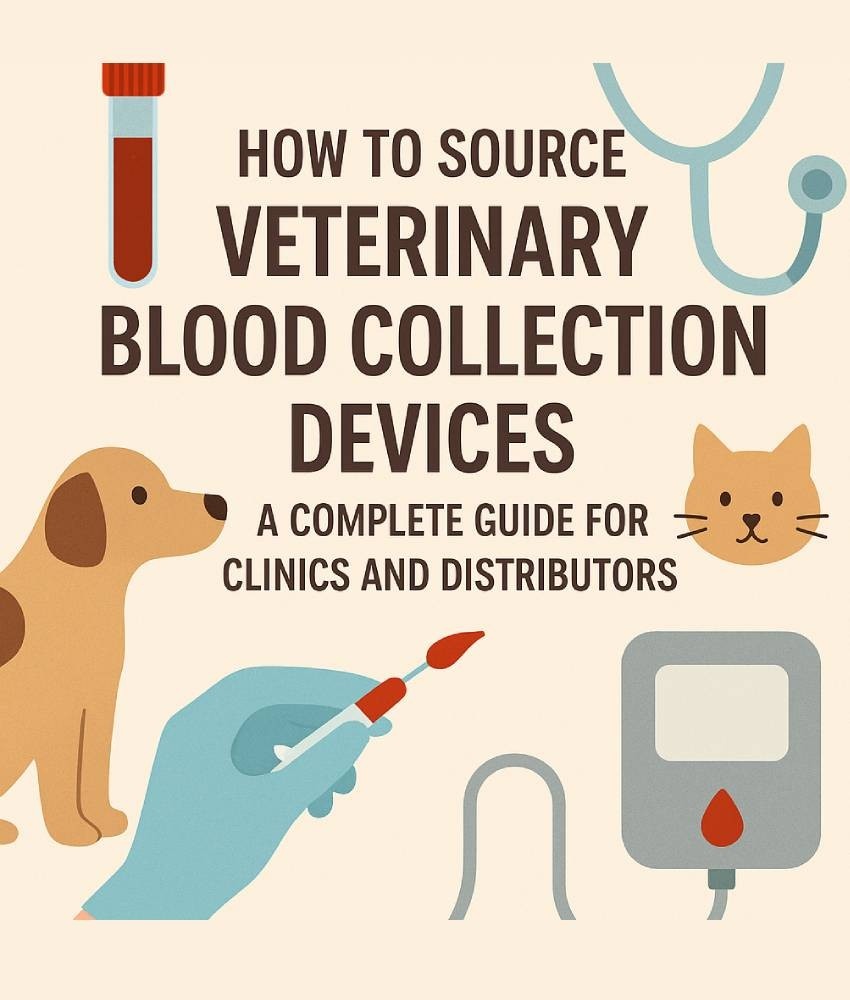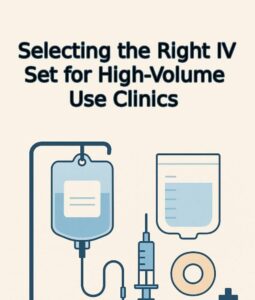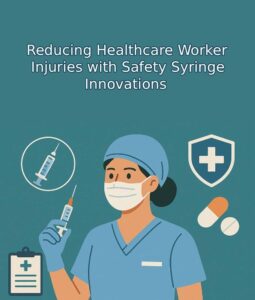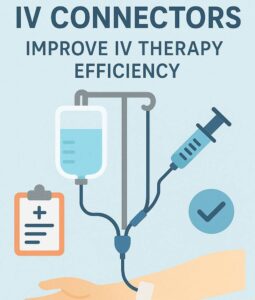The demand for precise and species-specific diagnostic tools is reshaping the veterinary industry. Today, clinics and distributors are increasingly seeking advanced veterinary blood collection systems tailored to diverse animal types. Whether you’re selecting an animal phlebotomy set for a mobile vet unit or ordering a bulk supply of vet blood tube kits for lab diagnostics, sourcing the right tools makes all the difference in care quality and operational efficiency.
This guide will walk you through everything you need to know about choosing, customizing, and sourcing top-tier veterinary blood collection devices from trusted suppliers. Know more..
Introduction to Animal Diagnostics and Sample Collection
The Vital Role of Veterinary Blood Collection in Modern Animal Healthcare
Blood testing is one of the most fundamental diagnostic tools in veterinary medicine. Efficient and species-appropriate veterinary blood collection processes ensure accuracy in diagnostics, helping vets detect diseases early, track recovery, and monitor overall health.
Trends Driving Demand for Vet Blood Tube Innovation
Recent trends include:
- Miniaturized tubes for exotic pets.
- Color-coded caps for test-specific sampling.
- Eco-friendly vet blood tube options.
With a growing pet population and more sophisticated veterinary practices, customization is in high demand.
Overview of Veterinary Blood Collection Equipment
Core Components of an Animal Phlebotomy Set
An animal phlebotomy set typically includes:
- Needle and holder.
- Winged infusion sets for delicate veins.
- Collection tubes (EDTA, serum, or heparin).
- Safety features like retractable needles.
Variations in Vet Blood Tube Design Based on Animal Type
Different species require different volumes, materials, and additives:
- Dogs and horses need larger-volume vet blood tubes.
- Cats, reptiles, and birds require low-draw vacuum tubes.
Why Customization Matters in Veterinary Blood Collection
Small vs. Large Animal Requirements
Smaller animals like rabbits and reptiles need softer, thinner-gauge needles and vacuum-less tubes to prevent collapse. Larger animals can handle high-vacuum vet blood tube setups for faster collection.
Specialty Tubes for Exotic and Laboratory Animals
OEM solutions allow for niche tubes, such as lithium-heparin tubes with micro-volumes, tailored for research or zoo settings.
Choosing Between OEM, ODM, and Off-the-Shelf Options
Custom Branding and Packaging for Veterinary Clinics
OEMs allow clinics to:
- Use custom labels with barcodes.
- Add educational inserts or handling instructions.
- Brand their own veterinary blood collection kits.
Flexibility in Volume and Additive Selection
Want a 0.5ml EDTA microtube with anti-clot coating? That’s where an OEM shines over generic products.
Key Features to Look for in a Veterinary Blood Collection Device
Needle Gauge, Material Quality, and Vacuum Precision
Look for:
- Siliconized needles for pain-free entry.
- Medical-grade PET tubes that resist shattering.
- Vacuum accuracy for repeatable draws.
Leak Resistance and Sterility Considerations
Your supplier should:
- Sterilize via EO or gamma.
- Validate seal integrity on every batch.
How to Identify a Reliable Animal Phlebotomy Set Manufacturer
Quality Control and Certification (ISO, CE)
Top suppliers will offer:
- ISO 13485 certification.
- CE compliance for international distribution.
- FDA registration for U.S. import.
Product Traceability and Supply Chain Transparency
Ensure lot numbers and expiration dates are printed and traceable for every animal phlebotomy set batch.
Cost Considerations When Sourcing Vet Blood Tube Systems
Bulk Pricing, MOQ, and Contract Terms
OEM pricing typically decreases with larger orders. Ask about:
- Tiered pricing.
- Storage options.
- MOQ flexibility.
Cost vs. Quality Balance
Avoid the temptation to go too cheap—low-quality vet blood tubes can result in test failure or contamination.
Common Applications of Veterinary Blood Collection Devices
Routine Testing in Clinics
- Complete blood counts (CBC)
- Thyroid panels
- Pre-surgical screenings
Field Use in Mobile Veterinary Units
Mobile setups need compact, spill-resistant, and versatile veterinary blood collection kits.
Sustainable and Eco-Friendly Options in Vet Blood Tube Production
Recyclable Tubes and Reduced Plastic Usage
Some OEMs now offer:
- PET recyclable tubes
- Reusable holders
- Compostable secondary packaging
Compliance with Environmental Standards
Choose suppliers who meet:
- RoHS compliance
- ISO 14001 environmental standards
Latest Innovations in Animal Phlebotomy Set Design
Ergonomic Grips and Safety Mechanisms
- Anti-slip grips reduce user fatigue.
- Retractable needle guards prevent injury.
Integrated RFID and Labeling Systems
Smart labeling enables:
- Electronic Medical Record (EMR) syncing.
- Automatic tube identification.
Mistakes to Avoid When Sourcing Veterinary Blood Collection Devices
Ignoring Species-Specific Needs
A common mistake is using the same vet blood tube for all animals. This can lead to sample rejections.
Overlooking Shelf Life and Storage Conditions
Check:
- Expiry dates (should be 24–36 months).
- Recommended storage temperatures (usually 4–25°C).
How to Test Product Quality Before Large Orders
Pilot Programs and Usability Trials
Ask your supplier for sample kits and run:
- Multi-species tests.
- Compatibility checks with lab equipment.
Field Feedback from Veterinarians
Survey your end users on:
- Tube labeling clarity.
- Vacuum reliability.
- Draw time and comfort for animals.
Case Study: Successful Rollout of Custom Vet Blood Tube Kits in a Multi-Site Clinic
A veterinary chain operating 20 clinics adopted a branded veterinary blood collection system with color-coded vet blood tubes and ergonomic phlebotomy sets. Results:
- 40% decrease in mislabeled samples.
- 25% faster turnaround time.
- Enhanced client confidence through branded kits.
FAQs
Can I use human blood collection products on animals?
No. Most human tubes draw too much vacuum, risking vein collapse in small animals.
What’s the standard size for a vet blood tube?
Ranges from 0.5ml to 10ml depending on species and test type.
Are animal phlebotomy sets safe for exotic pets?
Yes—if selected properly. Use butterfly needles and low-draw tubes for reptiles and birds.
How often should veterinary clinics replace their blood collection inventory?
Every 18–24 months or according to the product’s shelf life.
What certifications are required for importing vet blood tubes?
Typically ISO 13485, CE, and sometimes FDA for specific countries.
How do I know if my supplier is GMP-certified?
Request audit reports and look for facility certifications on their website.
Conclusion: Smart Sourcing Strategies for Better Animal Diagnostics
The success of your clinic or distribution network depends heavily on the quality and reliability of your veterinary blood collection systems. By partnering with trusted OEMs and prioritizing safety, customization, and sustainability, you can deliver better outcomes across every species.
From cutting-edge animal phlebotomy set designs to eco-conscious vet blood tube packaging, modern solutions are available to fit every budget and clinical need. Choose smart. Choose specific. Choose quality.






